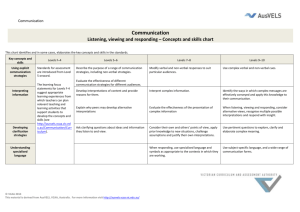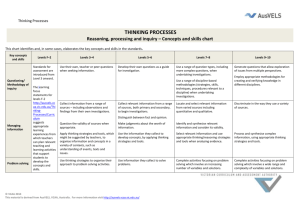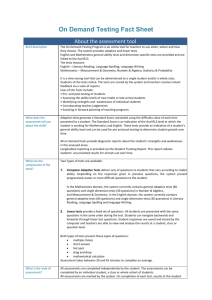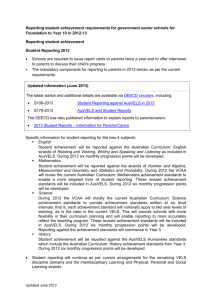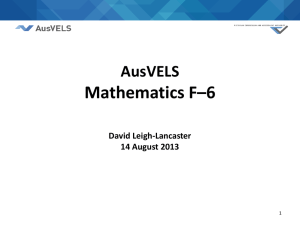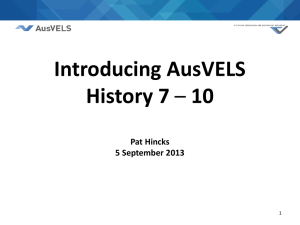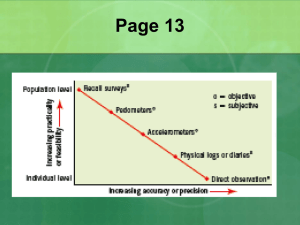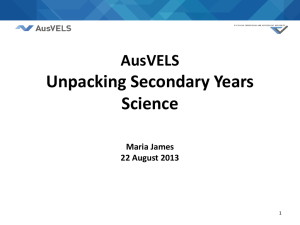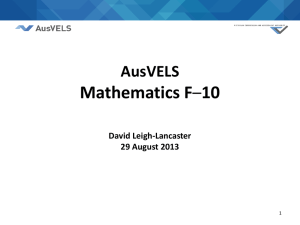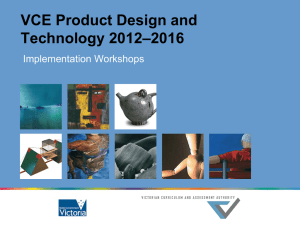Economics concepts and skills charts
advertisement
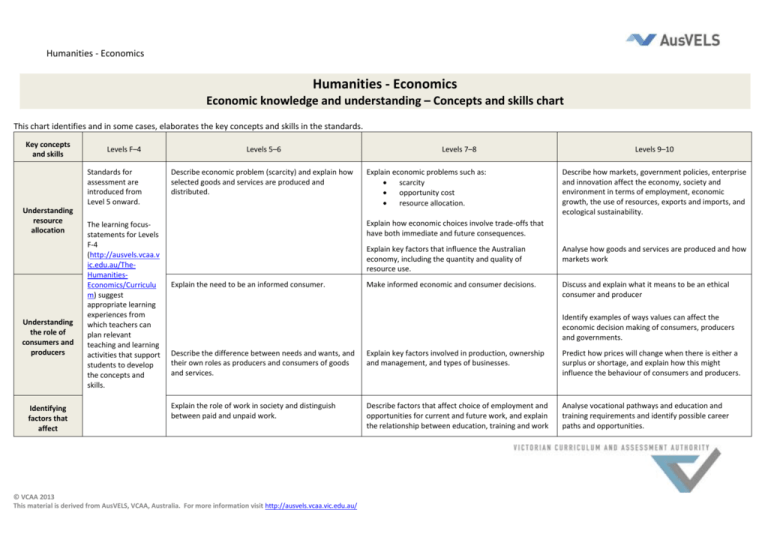
Humanities - Economics Humanities - Economics Economic knowledge and understanding – Concepts and skills chart This chart identifies and in some cases, elaborates the key concepts and skills in the standards. Key concepts and skills Levels F–4 Standards for assessment are introduced from Level 5 onward. Understanding resource allocation Understanding the role of consumers and producers Identifying factors that affect The learning focusstatements for Levels F-4 (http://ausvels.vcaa.v ic.edu.au/TheHumanitiesEconomics/Curriculu m) suggest appropriate learning experiences from which teachers can plan relevant teaching and learning activities that support students to develop the concepts and skills. Levels 5–6 Describe economic problem (scarcity) and explain how selected goods and services are produced and distributed. Levels 7–8 Explain economic problems such as: scarcity opportunity cost resource allocation. Levels 9–10 Describe how markets, government policies, enterprise and innovation affect the economy, society and environment in terms of employment, economic growth, the use of resources, exports and imports, and ecological sustainability. Explain how economic choices involve trade-offs that have both immediate and future consequences. Explain the need to be an informed consumer. Explain key factors that influence the Australian economy, including the quantity and quality of resource use. Analyse how goods and services are produced and how markets work Make informed economic and consumer decisions. Discuss and explain what it means to be an ethical consumer and producer Identify examples of ways values can affect the economic decision making of consumers, producers and governments. Describe the difference between needs and wants, and their own roles as producers and consumers of goods and services. Explain key factors involved in production, ownership and management, and types of businesses. Predict how prices will change when there is either a surplus or shortage, and explain how this might influence the behaviour of consumers and producers. Explain the role of work in society and distinguish between paid and unpaid work. Describe factors that affect choice of employment and opportunities for current and future work, and explain the relationship between education, training and work Analyse vocational pathways and education and training requirements and identify possible career paths and opportunities. © VCAA 2013 This material is derived from AusVELS, VCAA, Australia. For more information visit http://ausvels.vcaa.vic.edu.au/ Humanities - Economics employment Compare different types of work and enterprise in the local community. opportunities. Demonstrate skills required for moving from school to employment or further education. Demonstrate basic understanding of personal money management and the role of banking, budgeting and saving. Make informed economic and consumer decisions, demonstrating the development of personal financial literacy. Explain the role and significance of savings and investment for individuals and for the economy, and demonstrate the skills required to successfully plan and manage personal finances. Identify and describe ways the government influences economic outcomes at the personal, local and national level. Analyse the role and significance of exchange, trade and globalisation in influencing Australia’s standard of living. Developing skills in consumer and financial literacy Understanding consequences of government policies Analyse the role that governments and other institutions such as banks, the Australian Council of Trade Unions (ACTU) play in the economy, and evaluate their performance in achieving appropriate economic outcomes for individuals and for society. Predict the economic consequences of proposed government policies and make informed choices among alternative public policy proposals. Explain the impact of macroeconomic and microeconomic policies on themselves and others, including businesses. © VCAA 2013 This material is derived from AusVELS, VCAA, Australia. For more information visit http://ausvels.vcaa.vic.edu.au/ Page 2 of 2 Humanities - Economics Humanities - Economics Economic reasoning and interpretation– Concepts and skills chart This chart identifies and in some cases, elaborates the key concepts and skills in the standards. Key concepts and skills Inquiring into economic issues and forming conclusions Developing and justifying opinions about economic issues Levels F–4 Standards for assessment are introduced from Level 5 onward. The learning focusstatements for Levels F-4 (http://ausvels.vcaa.v ic.edu.au/TheHumanitiesEconomics/Curriculu m) suggest appropriate learning experiences from which teachers can plan relevant teaching and learning activities that support students to develop the concepts and skills. Levels 5–6 Use the inquiry process to plan economics investigations about economic issues in the home, school or local community and form conclusions supported by evidence. Levels 7–8 Use the inquiry process to plan economics investigations, analyse and interpret data, and form conclusions supported by evidence. Levels 9–10 Use economic reasoning, including cost-benefit analysis, to research and propose solutions to economic issues and problems of global significance, and to clarify and justify values and attitudes. Plan and conduct investigations in order to research an economic problem and/or argue the validity or otherwise of their own hypotheses. Form and express opinions on economic issues that interest and/or impact on them personally, or locally and/or nationally. Use relevant economic concepts and relationships to evaluate economic propositions, proposals and policies, and debate the costs and benefits of contentious economics-related issues of local, national or international concern. Demonstrate an awareness of the impact of values and beliefs on economic issues, and how differences may be identified, negotiated, explained and possibly resolved. Interpret reports about current economic conditions, both national and global, and explain how these conditions can influence decisions made by consumers, producers and government policymakers. © VCAA 2013 This material is derived from AusVELS, VCAA, Australia. For more information visit http://ausvels.vcaa.vic.edu.au/ Page 1 of 1
